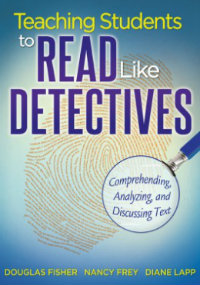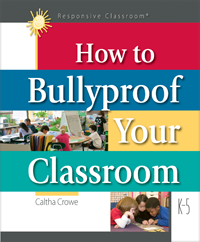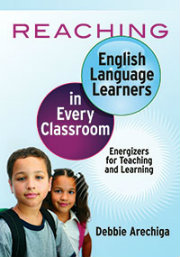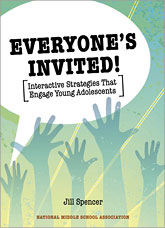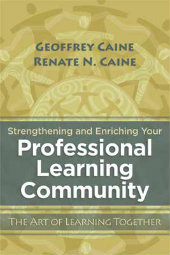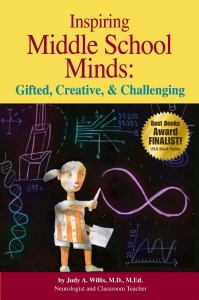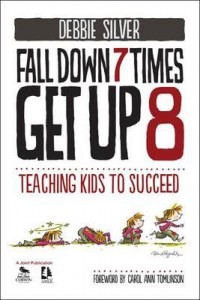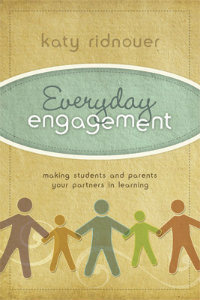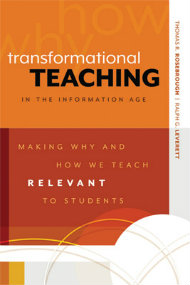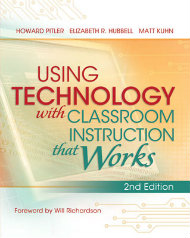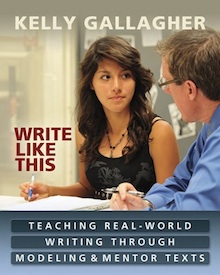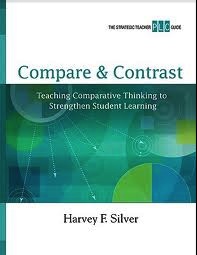Fall Book Review Festival 2
More of MiddleWeb’s Fall Book Review Festival
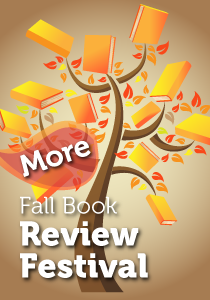
Well, the reviews just keep pouring in!
So we’ve decided to bring out a sequel: a dozen more brand-new reviews, covering teaching tips and strategies, digital tools and tech integration, the Common Core, bullying and behavior, brain-wise pedagogy, English language learners, creative thinking, motivation and more. Browse our brief summaries here and follow the links to read the complete posts.
And don’t forget: You can always read our latest reviews, browse the growing collection, and learn about writing reviews yourself by visiting our Book Reviews area of the website.
 Teaching Students to Read Like Detectives
Teaching Students to Read Like Detectives
Subtitled “Comprehending, Analyzing, and Discussing Text,” this book by Douglas Fisher, Nancy Frey and Diane Lapp achieves its not-so-modest goal of “teaching students to return to the text in their discussions,” says reviewer Joan Cansdale. “Wherever you are on your journey with your students to improve text-based critical thinking and discussion, you will find a wealth of ideas and resources here to speed you on your way.”
 How to Bullyproof Your Classroom
How to Bullyproof Your Classroom
This comprehensive and practical resource is an excellent guide for educators as they try to balance the academic rigor of the classroom with student social and emotional development, says reviewer Linda Biondi. Best of all, 35-year teaching veteran Catha Crowe “is well-aware of a teacher’s burdens, and she’s provided us with lesson plans that include objectives, materials needed, vocabulary, step-by-step directions and follow-up activities.”
 Reaching English Language Learners in Every Classroom
Reaching English Language Learners in Every Classroom
Reviewer Mary Churchill works with pre-service teachers and picked up this book looking for ways to help her new educators better serve their future English Language Learners. She was rewarded with a book that is not only “reader-friendly and especially helpful for busy teachers” but “practical and informative” with ideas and strategies that are powerful for ELL students and many other learners as well. Her only disappointment: a lack of tips for technology integration.
 Interactive Strategies That Engage Young Adolescents
Interactive Strategies That Engage Young Adolescents
Author Jill Spenser extends an invitation you will be glad you RSVP’ed, says veteran middle grades educator Sandy Wisneski. Her AMLE book is full of adaptable ideas for high student engagement that will inspire creativity and problem solving in your classroom. “You’ll find that your guests may not want to leave,” Wisneski says, “and that’s a sure sign of the best kind of celebration of learning.” Wisneski includes several favorite activities from Spencer’s book in her review.
 Strengthening and Enriching Your Professional Learning Community
Strengthening and Enriching Your Professional Learning Community
So many PD sessions waste teachers’ time. Geoffrey and Renate Caine have an answer, says reviewer Becky Osterfeld: Process Learning Circles. Not to worry: you won’t be holding hands and singing (unless you want to). But the Caines can help teachers “put the means for relevant, practical, thoughtful professional development back in your hands.” The process can be powerful, Osterfeld believes, with voluntary participation, a significant time commitment, and a knowledgeable process leader. “This is definitely a process that I can see using at my middle school.”
 Inspiring Middle School Minds: Gifted, Creative & Challenging
Inspiring Middle School Minds: Gifted, Creative & Challenging
Reviewer Diane Horban says neurologist turned teacher Judy Willis succeeds in intertwining brain research with practical lesson ideas that can ignite the thinking power of 10 to 14-year olds. Although the book was written with teachers of the gifted in mind, Horban notes that “it inspired me to think differently about the way I teach lessons to my middle grades students…It’s a book about brain development in ALL students at middle school.”
 Fall Down 7 Times Get Up 8: Teaching Kids to Succeed
Fall Down 7 Times Get Up 8: Teaching Kids to Succeed
In our second review of Debbie Silver’s book on student motivation, teacher and MiddleWeb contributor Julie Dermody is equally lavish in her praise: “Fall Down 7 times, Get up 8 is the solution for time- and money-strapped teachers who want to be informed about current research on motivation as well as be reminded of the continued significance of past research.” What’s more, “It’s also the solution for teachers who want to understand words such as flow, self-regulation, deliberate practice, self-determination and mindset as they pertain to students.”
 Making Students and Parents Your Partners in Learning
Making Students and Parents Your Partners in Learning
Reviewer Nicole Warchol admits that parent outreach isn’t her strong suit. “When I saw Katy Ridnouer’s book, I took it as a sign from the universe that this could be the year I became more pro-active around parent engagement.” While a few of Ridnouer’s suggestions made Warchol uncomfortable (texting parents, visiting homes), she found many excellent ideas that she believes can help her become better at partnering with parents to advance student learning.
 Transformational Teaching in the Information Age
Transformational Teaching in the Information Age
One of the biggest teacher challenges today, writes reviewer Jenni Miller, is to find ways to engage students “who seem to be more interested in being plugged in than in learning in traditional classroom settings.” Miller, a 20-year veteran herself, found this book to be “incredibly encouraging and helpful.” Among her takeaways: “Our students are growing up in a world wildly different than the world of our own youth.” And, most important, “the time we live in – the age of information overload – is not the enemy of good teaching.”
 Using Technology with Classroom Instruction that Works
Using Technology with Classroom Instruction that Works
Sixth grade teacher and technology coach Kevin Hodgson praises the authors of Using Technology for their emphasis on first creating an effective instructional framework. “My only real complaint is that there are too many tools here,” he says. But teachers “who dig in will find plenty of examples and strategies that can provide a nice road forward into using technology to plan instruction, and also, to engage students in learning.”
 Teaching Real World Writing Through Modeling and Mentor Texts
Teaching Real World Writing Through Modeling and Mentor Texts
Kelly Gallagher’s real-world approach to writing instruction is practical, relevant and doable by any teacher, says reviewer Rhonda Leduc, including middle grades educators who “aren’t English specialists.” Gallagher argues that for students to become adults who are able to write effectively in real world situations, teachers need to introduce student writers “to additional real-world writing opportunities,” using modeling and mentor texts.
 Compare & Contrast: Teaching Comparative Thinking
Compare & Contrast: Teaching Comparative Thinking
This book, one of a series by Harvey L. Silver intended for study by professional learning “clubs”, explores a basic strategy of good teaching effectively, says reviewer Joni Allison. Although Allison has some concerns, she says that “the book makes creating a PLC approachable and troubleshoots one of the greatest obstacles to educators who attempt to create a PLC: Time.” It also “provides clear delineation of the compare and contrast process, and I can see myself applying this same systematic approach to other higher-order thinking skills.”

